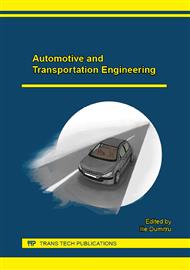p.429
p.437
p.443
p.455
p.461
p.472
p.480
p.491
p.497
Determining the Projection Throw Distance of a Pedestrian upon the Collision with a Vehicle
Abstract:
Recent statistics on the main causes of road traffic accidents and subsequently the main causes of victims’ injuries which may ultimately lead to fatalities, indicate that within urban areas the first place is occupied by prohibited road-crossing, accounting for over 20% of the causes for road traffic accidents. Hence, one of the major direct consequences arising is the severe injury of the pedestrians-up to their fatalities-due to prohibited road crossing through unauthorized places. Thus, the present paper underpins a research study on the vehicle-pedestrian collision, based on a statistical analysis of the pedestrian model, most frequently involved in road traffic accidents. The statistical analysis will be then reinforced by a theoretical study regarding this type of collision. In order to validate the mathematical model, applied to determine the projection throw distance of a pedestrian, we have also proposed a virtual simulation of the vehicle - pedestrian collision, described within the last section of the present research paper.
Info:
Periodical:
Pages:
461-471
Citation:
Online since:
January 2016
Authors:
Keywords:
Price:
Сopyright:
© 2016 Trans Tech Publications Ltd. All Rights Reserved
Share:
Citation:


